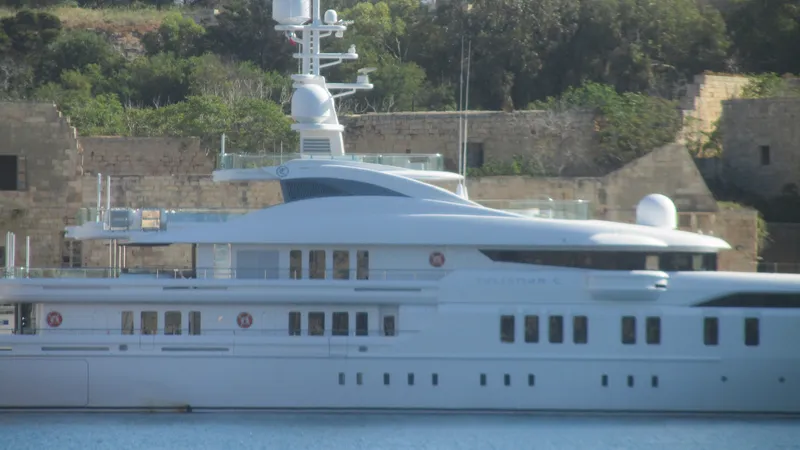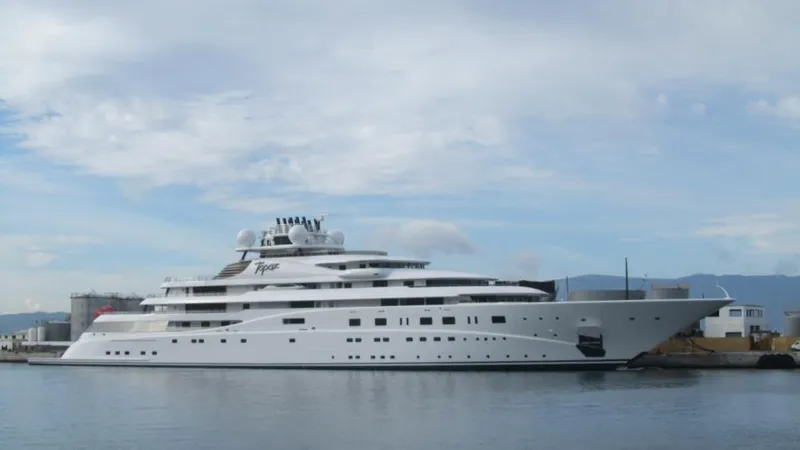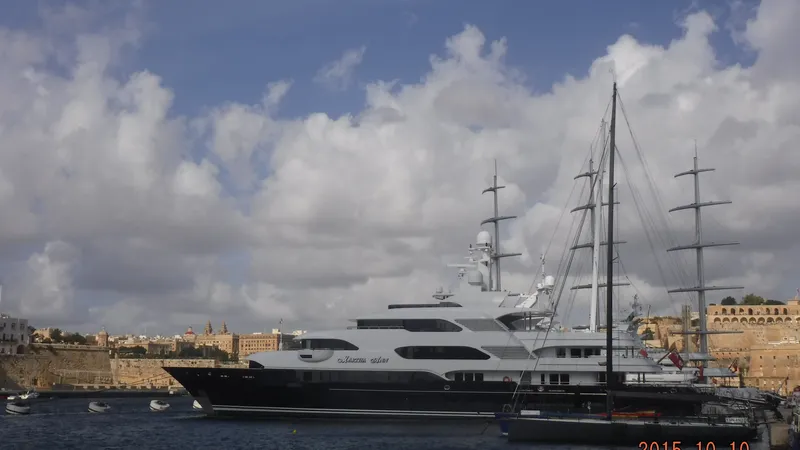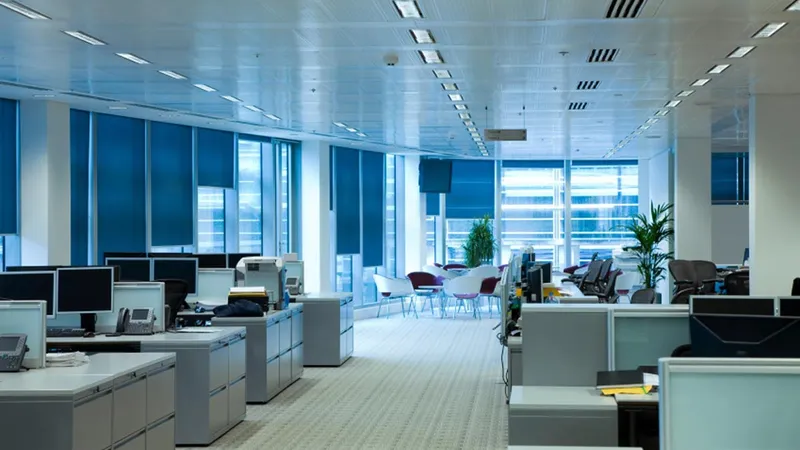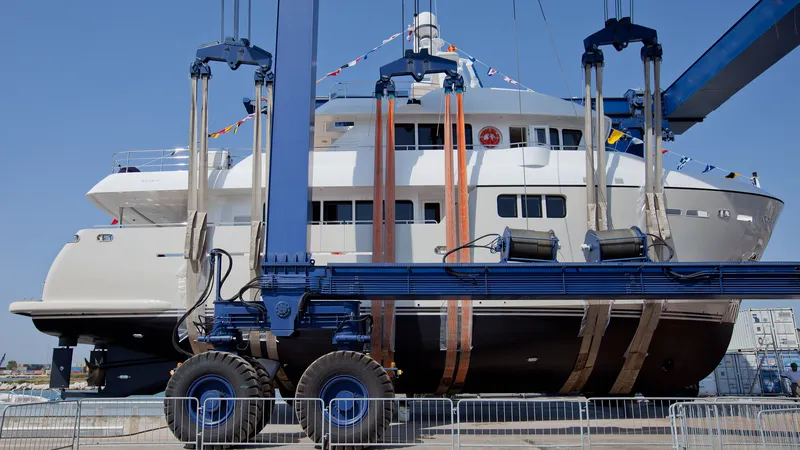Design
Superyacht Design
A superyacht is a complex vessel with various components and areas designed for functionality, comfort, and luxury. Here are the main parts of a superyacht:
- Hull:
The hull is the main body or shell of the yacht, typically made of steel, aluminum, or composite materials. It provides buoyancy and shape to the vessel. - Superstructure:
The superstructure is the above-deck structure, including the bridge, cabins, saloons, and other living areas. It is built on top of the hull and can be designed for both aesthetics and functionality. - Main Deck: Often includes the main saloon, dining areas, and guest cabins.
- Upper Deck: May feature additional cabins, a sky lounge, or outdoor entertainment areas.
- Sun Deck: Typically an open area for sunbathing, socializing, and enjoying panoramic views.
- Swim Platform: A platform near the waterline for water access and recreational activities.
- Engine Room:
The engine room houses the yacht's propulsion system, engines, generators, and other machinery. It is a critical area for the vessel's operation. - Bridge:
The bridge is the command center of the yacht, where the navigation and control systems are located. It provides a panoramic view for the captain and crew. - Crew Quarters:
Crew quarters include cabins, mess areas, and facilities for the yacht's crew. Depending on the yacht's size, there may be separate crew accommodations. - Galley:
The galley is the yacht's kitchen, equipped to prepare meals for guests and crew. It may feature professional-grade appliances and ample storage. - Guest Cabins:
Guest cabins are private living spaces for the yacht's passengers. They are designed for comfort and often include en-suite bathrooms. - Saloon and Entertainment Areas:
The main saloon is a central living area for guests, featuring seating, entertainment systems, and often connecting to outdoor spaces. Additional entertainment areas, like a cinema or game room, may be present. - Dining Areas:
Superyachts typically have formal and informal dining areas, including indoor and outdoor spaces, to accommodate guests. - Tender Garage:
Many superyachts have a dedicated space for storing tenders, water toys, and other recreational equipment. This area may be accessible through a large door or platform. - Stabilizers:
Stabilizers help minimize the yacht's roll in rough seas, improving comfort for passengers. Some yachts use fins, while others employ more advanced systems. - Swimming Pool or Jacuzzi:
Larger superyachts may feature swimming pools or Jacuzzis on deck for relaxation and enjoyment. - Helipad:
Some superyachts are equipped with a helipad for convenient helicopter access. - Anchor System:
The anchor system includes the anchor, chain, and windlass, used for securing the yacht in place when at anchor. - Communication and Navigation Systems:
These systems include radar, GPS, communication devices, and other equipment essential for safe navigation and communication. - Environmental Systems:
Systems for waste treatment, water purification, and air conditioning contribute to environmental sustainability on modern superyachts.
These are general components, and the specific features and layout can vary widely among different superyachts based on their size, design, and the preferences of the owner.
Naval Architecture
Naval Architecture is the discipline responsible for the design, construction, and overall engineering of ships and other waterborne structures, including superyachts. In the context of a superyacht, naval architects play a crucial role in creating vessels that are not only aesthetically pleasing but also safe, efficient, and seaworthy. Here are some key aspects of a naval architect's role in the design of a superyacht:
- Hull Design:
Naval architects are involved in designing the hull of the superyacht, determining its shape, size, and hydrodynamic characteristics. The hull design influences the yacht's performance, stability, and fuel efficiency. - Stability and Seakeeping:
Ensuring the stability and seakeeping abilities of the superyacht is a primary concern. Naval architects use hydrodynamic principles to design hulls that provide stability in various sea conditions. - Structural Design:
Naval architects are responsible for the structural design of the yacht, including the selection of materials and the arrangement of components to ensure strength, durability, and safety. - Propulsion System:
The choice and design of the propulsion system, including engines and propulsion arrangements, fall under the purview of naval architects. They consider factors such as speed, efficiency, and environmental impact. - Systems Integration:
Naval architects coordinate the integration of various onboard systems, including mechanical, electrical, and plumbing systems, to ensure seamless operation and optimal performance. - Weight Distribution:
Managing weight distribution is critical for the stability and performance of the superyacht. Naval architects work on distributing weight strategically to maintain balance and prevent issues like pitching and rolling. - Safety Regulations Compliance:
Naval architects ensure that the superyacht complies with safety regulations and international maritime standards. This includes considerations for stability criteria, lifesaving equipment, and emergency procedures. - Design Optimization:
They work to optimize the design for efficiency, considering factors like fuel consumption, range, and overall performance. This may involve the use of computational fluid dynamics (CFD) and other advanced modeling techniques. - Yacht Customization:
Naval architects collaborate with yacht designers and owners to customize the yacht according to the owner's preferences, incorporating specific design elements and features while ensuring structural integrity. - Environmental Considerations:
With a growing emphasis on environmental sustainability, naval architects may explore and implement eco-friendly technologies, such as hybrid propulsion or alternative fuels, to reduce the yacht's environmental impact. - Construction Oversight:
Naval architects are often involved in overseeing the construction phase, working closely with shipyards to ensure that the design specifications are accurately implemented.
Naval architects collaborate with yacht designers, interior designers, and other professionals to create a superyacht that aligns with the owner's vision while meeting industry standards and regulations. Their expertise in engineering and maritime design is crucial for achieving a balance between aesthetics and performance in the creation of a unique and seaworthy vessel.

General Arrangements by ISA.
Exterior Design
The exterior design of a superyacht is a crucial aspect that combines aesthetics, functionality, and innovative engineering. It involves the overall visual appearance, styling, and architectural elements of the yacht's exterior. Here are key aspects of the exterior design of a superyacht:
- Hull Design:
The hull design plays a central role in the yacht's performance and aesthetics. It includes considerations for the waterline, bow shape, and overall hull profile. Different hull designs impact stability, speed, and fuel efficiency. - Superstructure:
The superstructure is the above-deck structure that houses the yacht's cabins, saloons, and other living spaces. Its design influences the yacht's overall silhouette and may feature sleek lines, curves, or angular elements. - Deck Layout:
The layout of the decks is carefully planned to optimize space and functionality. This includes the arrangement of outdoor lounges, dining areas, sun decks, swimming pools, and other amenities. - Exterior Lighting:
Exterior lighting is used for both safety and aesthetics. Yachts often incorporate a combination of functional lighting for navigation and security, as well as decorative lighting to highlight architectural features during the evening. - Windows and Port Holes:
The placement and design of windows and port holes impact both the interior and exterior aesthetics. Large windows offer panoramic views and enhance natural light inside the yacht. - Color Scheme:
The choice of colors for the hull, superstructure, and deck areas contributes to the yacht's visual identity. Owners often work with yacht designers to select colors that reflect personal preferences and style. - Materials:
The selection of materials for the exterior, including the hull and superstructure, involves considerations of weight, durability, and aesthetics. Common materials include fiberglass, aluminum, steel, and composite materials. - Helipad and Tender Storage:
Superyachts equipped with helipads or tender storage areas incorporate these elements into the design seamlessly. The helipad is often strategically placed, and tender garages are integrated without compromising the yacht's overall aesthetics. - Exterior Furniture and Furnishings:
Outdoor furniture, lounges, and furnishings contribute to the exterior design. These elements are chosen to complement the overall design and provide comfort for guests. - Railings and Safety Features:
Safety features, including railings and barriers, are integrated into the exterior design to ensure the well-being of passengers while maintaining a clean and sleek appearance. - Anchor System:
The design and placement of the anchor system are considered in the overall design, often with a focus on functionality and aesthetics. - Water Features:
Some superyachts incorporate water features, such as waterfalls or fountains, to enhance the exterior design and create a luxurious atmosphere. - Branding and Identity:
The yacht's exterior design may incorporate personalized elements, logos, or distinctive features that reflect the owner's brand or identity.
The exterior design of a superyacht is a collaborative effort involving yacht designers, naval architects, and the owner's input. It aims to create a visually stunning and functional vessel that meets the owner's vision and preferences while adhering to safety and performance standards.
Interior design
Interior design for a superyacht involves creating a luxurious, comfortable, and visually appealing living space that reflects the owner's preferences and lifestyle. Interior designers work closely with yacht owners, naval architects, and other professionals to optimize the use of available space while ensuring a harmonious and cohesive design throughout the yacht. Here are key aspects of the interior design for a superyacht:
- Layout and Spatial Planning:
Interior designers carefully plan the layout to maximize the efficient use of space. They consider the arrangement of cabins, saloons, dining areas, and other functional spaces to create a seamless flow and optimal functionality. - Aesthetics and Style:
The overall aesthetic and style are essential considerations. Designers work with owners to determine the desired look, whether it's modern, classic, minimalist, or a fusion of styles, and select appropriate color palettes, materials, and finishes. - Luxurious Materials:
High-quality and luxurious materials are chosen for interior surfaces, including fine woods, marble, granite, leather, and metals. These materials contribute to the yacht's opulent atmosphere. - Custom Furniture and Fixtures:
Furniture and fixtures are often custom-designed to fit the unique dimensions and style of the yacht. Customization allows for personalization and ensures that the furnishings complement the overall design. - Lighting Design:
Lighting plays a crucial role in creating ambiance. Interior designers plan and implement lighting schemes that enhance the yacht's atmosphere, taking into account both natural and artificial lighting. - Technological Integration:
Integration of state-of-the-art technologies is a common feature in superyacht interiors. This may include automation systems, entertainment systems, climate control, and other smart technologies. - Privacy and Comfort:
Ensuring privacy and comfort for both owners and guests is a priority. Interior designers work on soundproofing, insulation, and incorporating comfortable furnishings to enhance the overall experience. - Storage Solutions:
Given the limited space on a yacht, interior designers focus on innovative storage solutions to maximize space efficiency. This may include hidden compartments, built-in storage, and multi-functional furniture. - Artwork and Decor:
Artwork, sculptures, and decor are carefully selected to complement the interior design. These elements add a personal touch and contribute to the overall ambiance of the yacht. - Spa and Wellness Areas:
Some superyachts feature dedicated spa and wellness areas. Interior designers work on creating serene and relaxing spaces, including gyms, saunas, and massage rooms. - Crew Areas:
While guest areas receive significant attention, interior designers also consider the design and functionality of crew areas. Comfortable crew quarters and communal spaces contribute to a positive working environment. - Environmental Considerations:
Increasingly, interior designers explore sustainable and eco-friendly materials and practices to align with environmental consciousness. This may include the use of recycled materials and energy-efficient technologies. - Custom Fabrics and Textiles:
Fabrics and textiles are selected for their durability, comfort, and aesthetic appeal. Interior designers often choose custom fabrics to fit the design theme and withstand the challenges of marine environments. - Safety Features:
Interior designers work with safety regulations to ensure that all design elements, including furnishings and materials, meet safety standards for maritime environments.
Interior design for a superyacht is a collaborative effort that requires coordination between designers, architects, craftsmen, and the yacht owner. The goal is to create a unique and luxurious living space that reflects the owner's tastes and provides an exceptional onboard experience.
